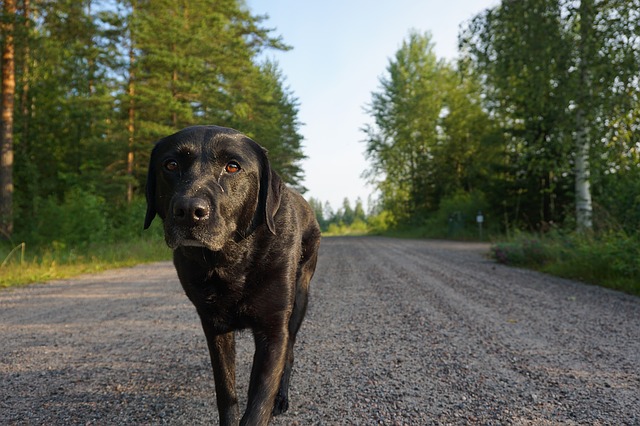Having a dog is a big responsibility. They depend on you to make the best decisions for them on everything from what they eat to how their hair is cut.
Although every loving dog parent has the best intentions at heart, certain choices that seem simple and harmless may actually result in fewer years with your furry friend.
1. Skipping Annual Vet Visits
Some people feel that it’s a waste of time and money to take their dogs to the vet when they seem perfectly healthy. As in humans, there are many signs of illness that cannot be seen with the naked eye. Dogs have the added challenge of not being able to communicate how they are feeling on the inside.
Our pups age anywhere from 4 – 8 years for every human year, making bi-annual or annual vet visits extremely important. A simple physical exam and routine blood work could be enough to catch a potentially life-threatening condition early and stop it in its tracks.
2. Not Properly Socializing Them to Humans & Other Dogs
The primary concern with poorly socialized pets is a decreased quality of life. Walks, visits from guests and encounters with potential puppy playmates can be terribly frightening for dogs that aren’t used to coexisting with anyone but their own housemates.
Lack of socialization leads to anxiety which can manifest as aggression, house soiling, self mutilation and dermatological issues. Fearful dogs are also more likely to run away, opening up a whole new set of dangers.
Whether you bring home a puppy or an adult dog, it’s never too late to socialize. Having difficulty conquering the task yourself? Bring in a behaviorist – that’s what they’re trained for!
3. Allowing Them to Pack on the Pounds
More than half of the dogs in the U.S. are considered overweight or obese according to the Association for Pet Obesity Prevention. Even more concerning is that 95% of overweight dogs’ owners reported thinking that their pups were at a healthy weight.
Carrying extra pounds can shorten your dog’s life and reduce the quality of the years you have together. Overweight dogs are more prone to arthritis, exercise intolerance, diabetes, liver disease and high blood pressure.
Before you put your pup on a diet or exercise routine, check in with your vet. An underlying cause like a thyroid condition could be the culprit.
4. Neglecting Teeth & Gums
An estimated 85% of dogs over the age of 5 suffer from periodontal disease caused by food, bacteria and plaque collecting at the gum line. This condition leads to more than just soreness and foul breath. A buildup of bacteria in the mouth can trigger systemic issues like heart, liver and kidney disease.
If your dog is already showing signs of dental disease, consult with your veterinarian before starting an at-home care regimen. A professional cleaning may be required first in order to bring the mouth back to a healthy, non-painful state. Dental chews are a great option to help keep those teeth nice and clean–along with fresh breath–in between your dog’s cleaning.
5. Not Providing Enough Mental & Physical Exercise
Dogs require physical and mental stimulation on a daily basis in order to maintain a healthy weight and keep them out of potentially hazardous mischief. Aside from having healthier cardiac and respiratory health, well exercised pups are far less likely to tear up your favorite T-shirt or swallow a pair of your socks.
Another added bonus: humans who exercise with their dogs tend to maintain a healthier weight themselves.
6. Pushing Certain Breeds Too Hard
Although exercise is extremely important, it’s also crucial that you know your dog’s limits. Brachycephalic breeds like Pugs, English Bulldogs, Shih Tzus and Pekingese tend to have more respiratory issues and are more likely to develop heat stroke than their longer muzzled cousins.
Obese dogs, pups with flat muzzles, and those with existing medical conditions like spinal problems should receive veterinary approval before beginning an exercise routine.
7. Exposing Them to Secondhand Smoke
Just as in humans, secondhand smoke can be a killer for dogs. They thrive on being close to their humans at all times and repeat exposure to toxins from cigarette smoke can result in allergies, respiratory issues, heart disease and certain types of cancer.
Tobacco is also toxic to dogs if ingested, so even having unlit cigarettes around the house puts pups at an increased risk.
8. Skipping Heartworm/Flea/Tick Prevention
This is a hot button issue for many loving pet parents. Recent trends in human and pet care call for a reduction in chemicals in favor of natural products. Unfortunately, fleas, ticks and heartworms are quite resilient and may not be eradicated by herbal products alone.
Ivermectin, Milbemycin and other active ingredients found in FDA-approved, thoroughly tested anti-parasitic products do carry a certain risk; but the number of dogs harmed by these products each year is far less than the number harmed by potentially deadly parasites. If you are concerned about how these products may affect your pup’s health, speak with your veterinarian to determine a safe protocol designed for your dog’s individual needs.
9. Feeding Them Unhealthy Foods
Nutrition may be the most complicated hurdle to overcome when it comes to canine health. Not all dog foods are healthy and not all human or table foods are unhealthy.
With that said, here are a few guidelines to use when choosing the best way to feed your dog.
- Choose a dog food with a protein source in the top few ingredients – preferably meat raised in the US.
- Byproducts are okay as long as they are Grade A.
- Choose a food for the correct life stage – Puppy, Adult, Senior.
- Avoid fillers, glazes and artificial coloring.
- Look for an AAFCO statement declaring that feeding tests were conducted.
- When it comes to human foods, think lean, high quality, high protein and high fiber.
- Know which foods are toxic to dogs.
- Avoid sharing fatty, processed or heavily flavored/spiced foods.
- If you decide to prepare your dog’s food at home, be sure to ask your vet for a healthy, balanced recipe.
10. Allowing Them to Roam Free
There are far too many potential dangers out there to let your BFF run loose – cars, coyotes, poisonous snakes, other dogs, unsavory humans with ill intentions…the list goes on and on. Even an ID tag and a microchip are no guarantee that your pup will return home safely. It’s best to keep your buddy safely leashed at your side when out exploring the world.

11. Deciding Whether to Spay/Neuter
This topic has received a lot of attention from the veterinary community in recent years. While some researchers now feel that leaving a dog intact can help reduce their risk of certain cancers, others still hold fast to the idea that neutering drastically reduces the risk of reproductive cancers in males and females.
One thing is for sure, spayed/neutered pets are less likely to run away or wander and are therefore safer from the hazards listed above. Whatever your personal stance is on the subject, be sure to do your research and discuss the matter with your vet before making your final decision.
These statements have not been evaluated by the Food and Drug Administration. This product is not intended to diagnose, treat, cure, or prevent any disease. The information on this website is not intended to replace a one-on-one relationship with a qualified healthcare professional.





 Toledo, United States.
Toledo, United States.